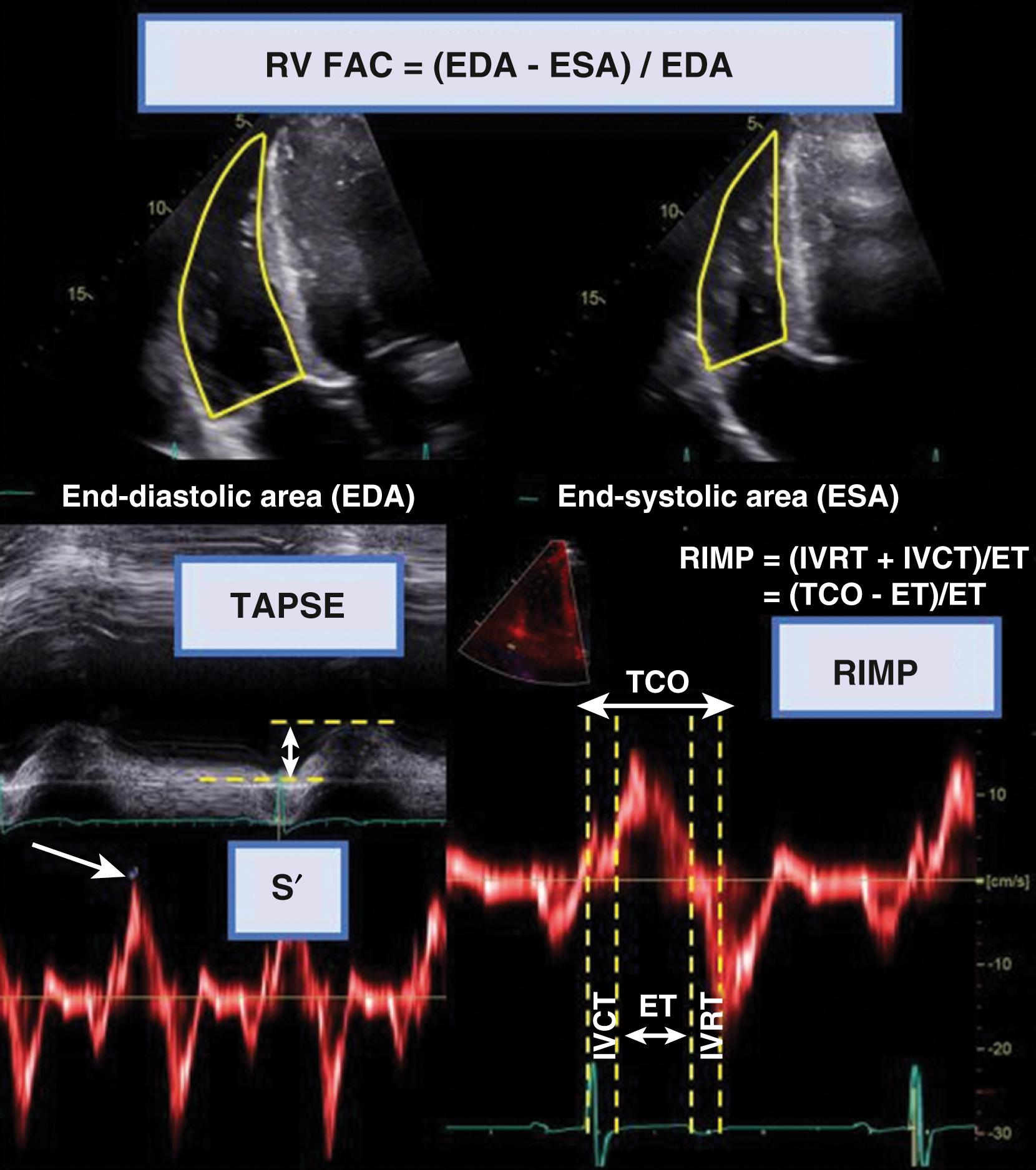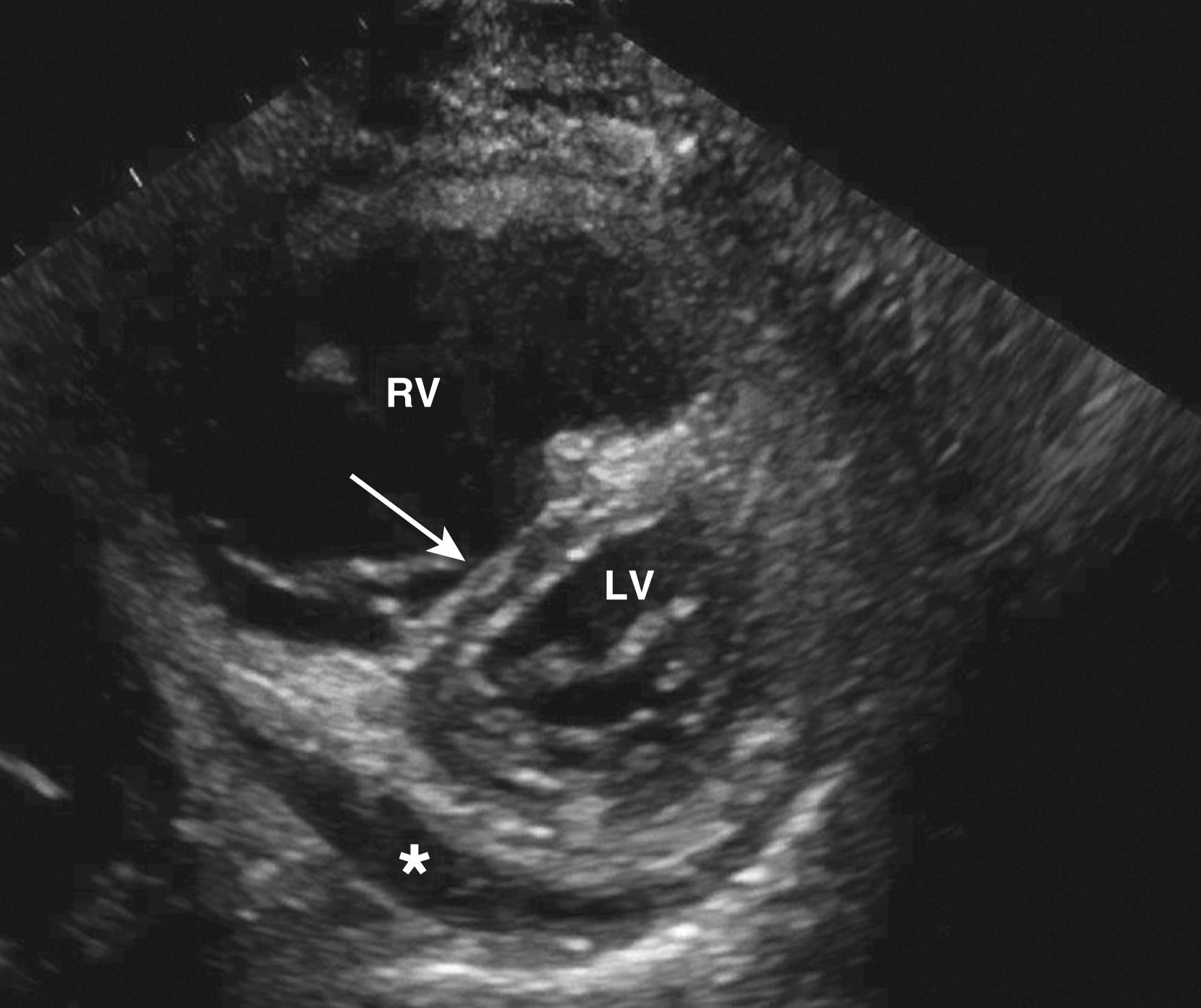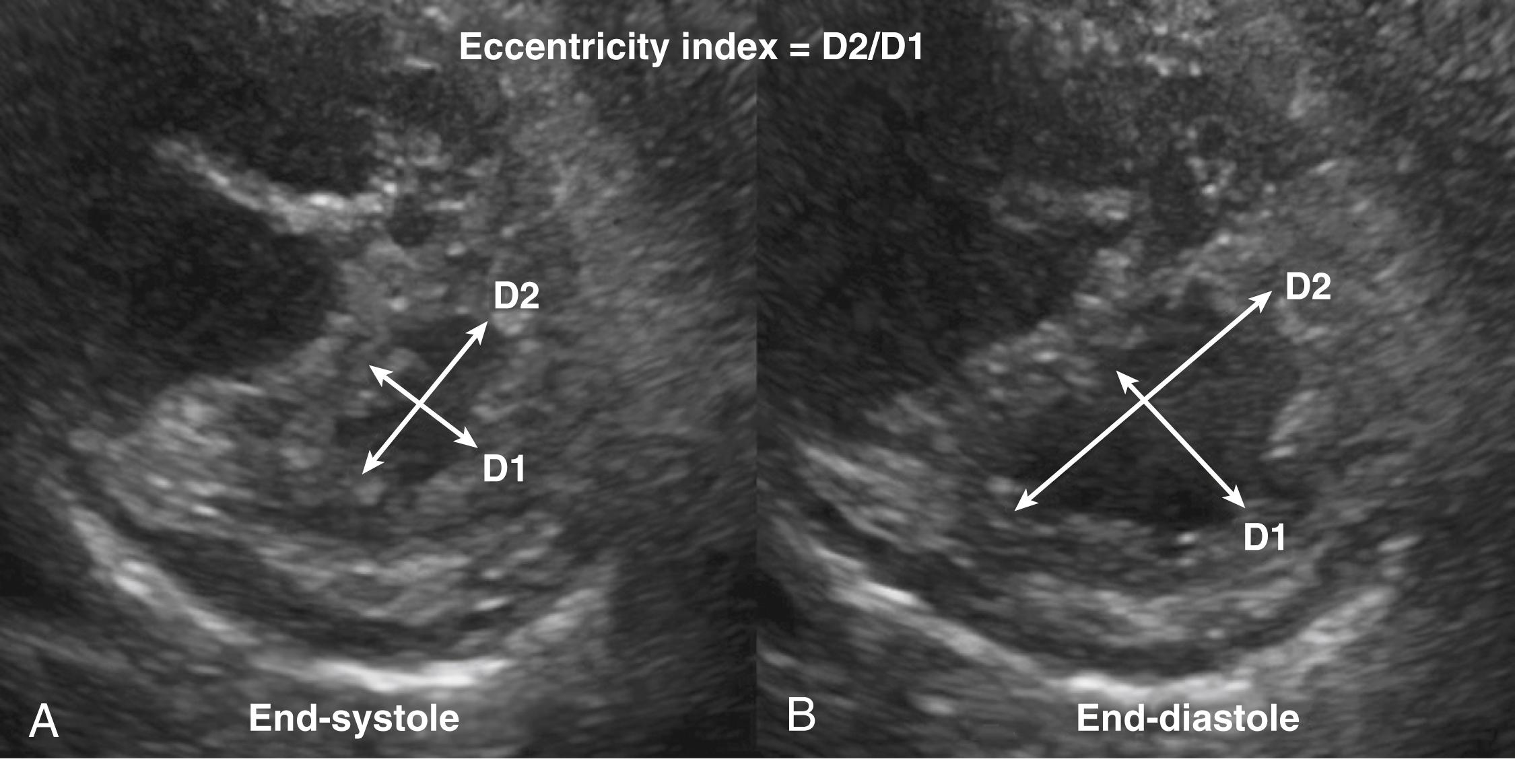Physical Address
304 North Cardinal St.
Dorchester Center, MA 02124
The authors acknowledge the contributions of Dr. Danita M. Yoerger Sanborn, who was the author of this chapter in the previous edition.
Cor pulmonale refers to right ventricular (RV) hypertrophy and enlargement caused by disorders of the lung parenchyma or vasculature. This excludes RV dysfunction from left heart failure or congenital heart disease. Cor pulmonale results from pulmonary hypertension (PH), which causes increased RV afterload and preload because of elevated central venous pressure leading to RV failure. The Sixth World Symposium on Pulmonary Hypertension in 2018 revised the definition of PH as having a pulmonary vascular resistance (PVR) greater than 3 Woods units (WU) and a mean pulmonary artery pressure (mPAP) greater than 20 mm Hg from the previous definition of a mPAP greater than 25 mm Hg. It can be subdivided hemodynamically into precapillary (pulmonary capillary wedge pressure [PCWP] <15 mm Hg and PVR >3 WU caused by dysfunction of the pulmonary vasculature or parenchyma) and postcapillary disease (PCWP >15 mm Hg, PVR <3 WU) caused by transmission of elevated left-sided cardiac pressures to the pulmonary circulation. PH is further classified into five groups according to clinical presentation, hemodynamics, disease mechanism, and treatment algorithm ( Table 77.1 ).
| Hemodynamics | Clinical Group | Cause | |
|---|---|---|---|
| Precapillary PH | Mean PAP >20 mm Hg PCWP <15 mm Hg PVR >3 WU |
Group 1: PAH | Idiopathic PAH |
| Heritable PAH | |||
| Connective tissue disease | |||
| HIV associated | |||
| Portal hypertension | |||
| Drugs | |||
| Group 3: lung disease | COPD | ||
| ILD | |||
| Sleep-disordered breathing | |||
| Alveolar hypoventilation | |||
| Chest wall abnormalities | |||
| Group 4: CTEPH | Chronic thromboembolic PH | ||
| Group 5: unclear or multifactorial | Hematologic disorders | ||
| Pulmonary sarcoidosis | |||
| Langerhans cell histiocytosis | |||
| Neurofibromatosis | |||
| Vasculitis | |||
| Postcapillary PH | Mean PAP >20 mm Hg PCWP >15 mm Hg PVR <3 WU |
Group 2: left heart disease | LV systolic dysfunction |
| LV diastolic dysfunction | |||
| Valvular heart disease | |||
| Group 5: unclear or multifactorial | Hematologic disorders | ||
| Pulmonary sarcoidosis | |||
| Langerhans cell histiocytosis | |||
| Neurofibromatosis | |||
| Vasculitis |
The most common respiratory cause of chronic cor pulmonale is chronic obstructive pulmonary disease (COPD). A large number of other diseases can lead to cor pulmonale, including (but not limited to) cystic fibrosis, interstitial lung disease, sickle cell anemia, sarcoidosis, obstructive sleep apnea, alveolar hypoventilation disorders, and neuromuscular and chest wall disorders. Typically, PH worsens insidiously over years causing chronic cor pulmonale but can also occur rapidly. The causes of acute cor pulmonale are limited and include massive pulmonary embolism or acute respiratory distress syndrome (ARDS) in which major insult to the pulmonary vasculature or parenchyma causes acute PH, leading to rapid RV pressure and volume overload.
Echocardiography is the cornerstone of noninvasive imaging in the diagnosis and assessment of cor pulmonale and PH. Echocardiography is advantageous because it is low cost and readily available and has an excellent safety profile with no ionizing radiation. Guidelines recommend assigning a probability of PH based on echocardiography findings with the main criteria being an elevated tricuspid regurgitant (TR) velocity and supporting criteria including RV, pulmonary artery (PA), right atrial (RA), and inferior vena cava size; interventricular septal contour; and PA Doppler characteristics. Asymptomatic individuals at high risk for PH, such as those with systemic sclerosis, a known genetic mutation, a first-degree relative with familial PAH, or portal hypertension, are recommended to undergo yearly screening echocardiography to diagnose PH early before the development of cor pulmonale. When long-standing PH is suspected or known, patients with cor pulmonale will manifest more advanced RV dysfunction such as flattening of the interventricular septum (IVS), RV dilatation, and RV systolic dysfunction. This chapter highlights the essential role of echocardiography in diagnosis, prognosis, disease monitoring, and treatment evaluation in patients with PH and cor pulmonale.
One of the earliest changes that occurs in the setting of chronic pressure overload is RV chamber dilatation. This can be assessed with two-dimensional (2D) echocardiography, most commonly by measuring the diameter of the RV base in the RV-focused apical four-chamber view, with a diameter greater than 41 mm indicating dilatation. As PH progresses, RV contractility becomes impaired, which manifests as reduced systolic function. There are several methods to assess RV systolic function on 2D echocardiography, including tricuspid annular plane systolic excursion (TAPSE), S′, fractional area change, and the RV index of myocardial performance (RIMP) ( Fig. 77.1 ). Bossone and coworkers studied a population of patients referred to a tertiary care center with known or suspected pulmonary arterial hypertension (PAH), finding that 98% had RV dilatation and 78% had reduced RV systolic function. Systolic flattening of the IVS is a common finding when the PA systolic pressures are significantly elevated. , This is best seen from the parasternal short-axis view of the ventricles ( Fig. 77.2 and ![]() ). The impact of RV pathology on the IVS in both end-systole and end-diastole can be further characterized by calculating the eccentricity index, defined as the ratio of D2 to D1, in which D2 is the minor-axis dimension of the left ventricle parallel to the septum and D1 is the minor-axis dimension perpendicular to and bisecting the septum ( Fig. 77.3 ).
). The impact of RV pathology on the IVS in both end-systole and end-diastole can be further characterized by calculating the eccentricity index, defined as the ratio of D2 to D1, in which D2 is the minor-axis dimension of the left ventricle parallel to the septum and D1 is the minor-axis dimension perpendicular to and bisecting the septum ( Fig. 77.3 ).



Video 77.2. Basal parasternal short-axis view of a patient with severe pulmonary arterial hypertension. Note the severe dilatation of the right ventricle (RV), septal flattening (arrow) , and presence of a pericardial effusion (asterisk) . LV, Left ventricle.
Pericardial effusions have also been described in the setting of chronic elevation of pulmonary pressures (see Fig. 77.2 ). , , The exact mechanism is unknown but may be caused by elevation of lymphatic and venous or RA pressures (or both), which results in reduced drainage of the pericardium. Patent foramen ovale, with shunting identified by agitated saline contrast, has also been described with increased frequency, which may be related to the opening of an existing patent foramen ovale tunnel in the setting of elevated RA pressures.
Become a Clinical Tree membership for Full access and enjoy Unlimited articles
If you are a member. Log in here